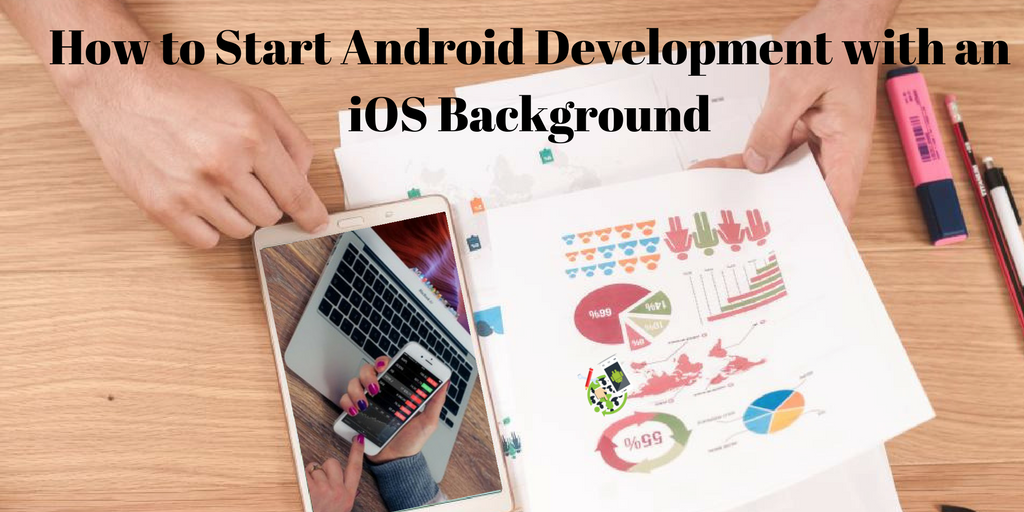Introduction:
Many iPhone app developers are afraid of jumping on the Android platform when the same app needs porting or creating an Android app from scratch. Fortunately, today differences between iOS and Android app development experiences are not acute, and many similarities can ease the process. Apple Inc. has first released the iPhone SDK and begun the era of custom mobile app development with the active involvement of third-party developers. Since Apple Inc. is a proprietary platform with huge capacities to support an entire mobile application development ecosystem, it has released technologies, tools and established a marketplace by providing extensive supports and strict monitoring and management to sustain in the long run. In the beginning, being an open-source and open platform, Android was missing the advancements of the iOS platform and used to pass through an evolution phase to achieve the standards akin to iOS has. Therefore, today’s differences between the two platforms are less, and similarities increase in a programming language, coding and designing tools, and marketing approaches. However, mobile app developers with iOS background have to consider some vital aspects while moving to Android app development.You Might Also Like: How to Build Android Ecommerce App for Online Mobile Shopping

Object-oriented Programming
Objective-C and now Swift like iOS programming languages are following OOP concepts, such as- Objects
- Encapsulation
- Polymorphism
- Inheritance
- Self
- Subclasses/superclasses
- Overriding methods
- Delegates
|
Tip: iOS developers should refer Wikipedia, which has a list of Java keywords to comprehend the concept of Java code and implement it after referring right context available in Android sample code from Google. |
Comparing Components
For the iOS developers, the most challenging task while migrating or moving from iOS to Android development is figuring out the various components regarding syntax and semantics. We have listed some highly used and profoundly affecting components here. Still, developers can find details from the official Android platform’s official documentation platform, as they are releasing regular updates.| Components | iOS (Objective-C / Swift) | Android |
| Nomenclature | Class prefixes (Objective-C) / Module (Swift) | Name spacing & Package management |
| Getters/Setters | Properties auto @synthesized / Native Properties | getFoo & setFoo methods |
| Null/Nil | no-ops / Options | Need to Null check objects |
| Assets | xcassets asset catalogs | res folder |
| UI Layout Files | A single .storyboard file | A separate XML layout file |
| Project Configuration File | Info.plist | AndroidManifest.xml |
| View Class Component | UIViewControllers | Activities and Fragments |
| Lists | UITableView, UICollectionView | RecyclerView, ListActivity and ListFragment |
| Text Display | UILabel, UITextField, and UITextView | TextView – EditText |
| Loosely Coupled Callbacks | Delegates | Adapters |
| Asynchronous Logic | Grand Central Dispatch, NSOperationQueue | AsyncTasks, Background Services, IntentService |
| Dependency Manager | Cocoapods or Carthage / Package Manager | Gradle |
| Project Hierarchy | Workspace | Project |
| Primitives | int, float, double, char | int, float, char |
| Screen Size Units | Pixels and points | Pixels, density-independent pixels (dp), scale-independent pixels (sp) |
| Resuming a “Killed” App | Starts from scratch and re-launches the app | Maintains a stack of activities |
| Orientation Changes | Auto Layout default support | Several options available including destroying/rebuilding Activities |
IDE (Integrated Development Environment)
There are two different IDE used on both platforms. X-code is for iOS app development, while recently, Android Studio is for Android. However, Eclipse was used before for Android development. There are some differences between the two IDE, such as- UI code is written differently on both platforms.
- X-code uses storyboards and nibs, whereas individual XML files are used on Android Studio.
- The iOS simulator is snappy, while Android emulators are slow when doing debugging processes.
You Might Also Like: 15 Essentials to Develop Custom iPhone Application
